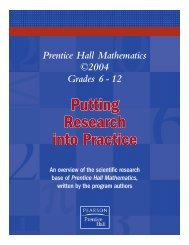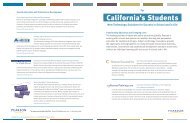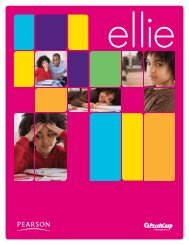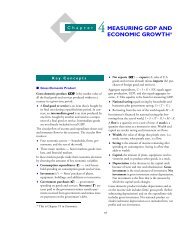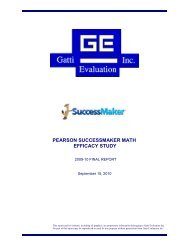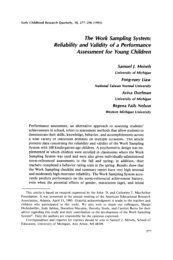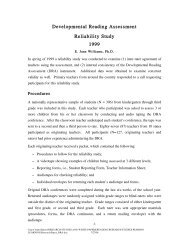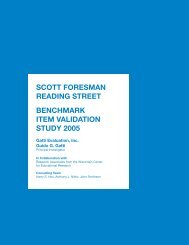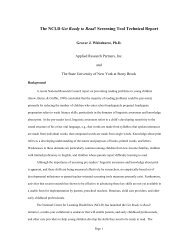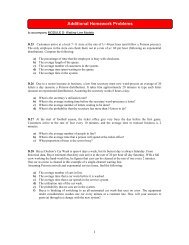Correcting Run-on SentencesFollowing are three useful ways to correct run-ons:■■■Make two separate sentences of the run-on thoughts by inserting a period <strong>and</strong> a capital letter.Dave <strong>and</strong> Rhonda are crazy about figure skating. They watch it on television constantly.Use a comma plus a coordinating conjunction (<strong>and</strong>, but, for, or, nor, so, yet) to connect the two complete thoughts.Coordinating conjunctions are joining words that, when used with a comma, show the logical connection between twoclosely related thoughts.Dave <strong>and</strong> Rhonda are crazy about figure skating, so they watch it on television constantly.Use a subordinator. You can also show the relationship between two sentences by using a subordinator (words likeafter, because, <strong>and</strong> although) to change one of them into a dependent clause.Because Dave <strong>and</strong> Rhonda are crazy about figure skating, they watch it on television constantly.Common Subordinatorsafter even though unless wheneveralthough if until whereas in order that what whereverbecause since whatever whetherbefore though when whileWords That Often Lead to Run-on SentencesFrequently the second sentence in a run-on begins with one of the words in the following table. These words often refer tosomething in the first sentence or seem like joining words. Beware of run-ons whenever you use one of these words inyour writing.Words That Often Lead to Run-onsI we there nowyou they this thenhe that nextsheitMaking Subjects <strong>and</strong> Verbs AgreeBeing able to identify subjects <strong>and</strong> verbs is important. But you must also make sure that the subjects <strong>and</strong> verbs agree innumber. This grammatical rule is called subject-verb agreement.■A singular subject (one person or one thing) is used with a singular verb.For example:Her habit annoys me. (singular)The plane was late. (singular)
■A plural subject (more than one person or thing) is used with a plural verb.For example:Her habits annoy me. (plural)The planes were late. (plural)Writers sometimes make mistakes in subject-verb agreement in sentences with more than one subject—a compound subject—orwith verbs separated from subjects. It’s also common for writers to confuse subject-verb agreement when usingpronouns (I, you, he, she, it, we, you, <strong>and</strong> then), either/or, neither/nor connectors, or “there” sentences. Examples of thesefollow in this topic.Compound SubjectsSubjects joined by <strong>and</strong> are typically paired with a plural verb. These are called compound subjects. The only exception tothis rule would be subjects considered singular because they are they are taken as a single unit, such as Rock ‘n’ Roll.For example:John <strong>and</strong> Tina are very close. (plural)Corned beef <strong>and</strong> cabbage is my favorite meal. (singular)Hot cocoa <strong>and</strong> a good book make S<strong>and</strong>ra happy. (plural)Hide-<strong>and</strong>-seek is played by almost all children. (singular)Verbs Separated from SubjectsWhen words, such as prepositional phrases, come between the subject <strong>and</strong> verb, the interrupting words do not changesubject-verb agreement. The verb still must agree with the subject of the sentence.The coins on the table are mine. (plural )The price of the dining room chairs is ridiculous. (singular)That woman with plaid bell bottoms seems strange. (singular)Those shirts, as well as that coat,need a thorough cleaning. (plural)<strong>Punctuation</strong>CommasWriters use commas to mark slight pauses or breaks in sentences. When used properly, commas clarify meaning in a sentence.When overused, however, commas can interrupt the smooth flow of sentences <strong>and</strong> cause confusion. Whenever youadd a comma to a sentence, you should be conscious of the specific comma usage rule you are applying. All good writersshould know the six primary comma rules covered in this topic.1. Use a comma after an introductory word or word group that leads into the main sentence.■ Strolling down the nature trail, Zac saw a brown bear.■ When you have finished eating your broccoli, you may leave the table.A dependent clause that comes at the beginning of a sentence always needs to be followed by a comma. The second exampleabove illustrates this concept. However, if the dependent clause comes at the end of the sentence, no comma is necessary:■You may leave the table when you have finished eating your broccoli.



